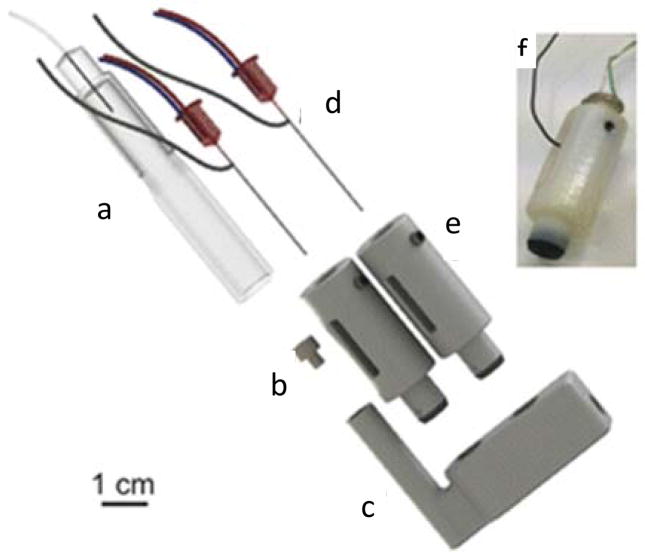Figure 4.
An integrated 3D-printed microfluidic system for metabolite detection. Part (a) is the outlet of a dialysis probe that collects samples from a human being. Via part (b), which is a 3D-printed adapter, (a) can be connected to the 3D-printed microfluidic device (c). Two electrodes (d) were housed in 3D-printed adapters (e), which can be screwed into the microfluidic channel with a good sealing. When a sample is collected and flowing through the channel, glucose and lactate can then be electrochemically detected. (f) is a real picture of a housed electrode and the black part was 3D-printed using a rubber-like material for tight sealing. (Adapted from ref. 56 with permission from The American Chemical Society)

